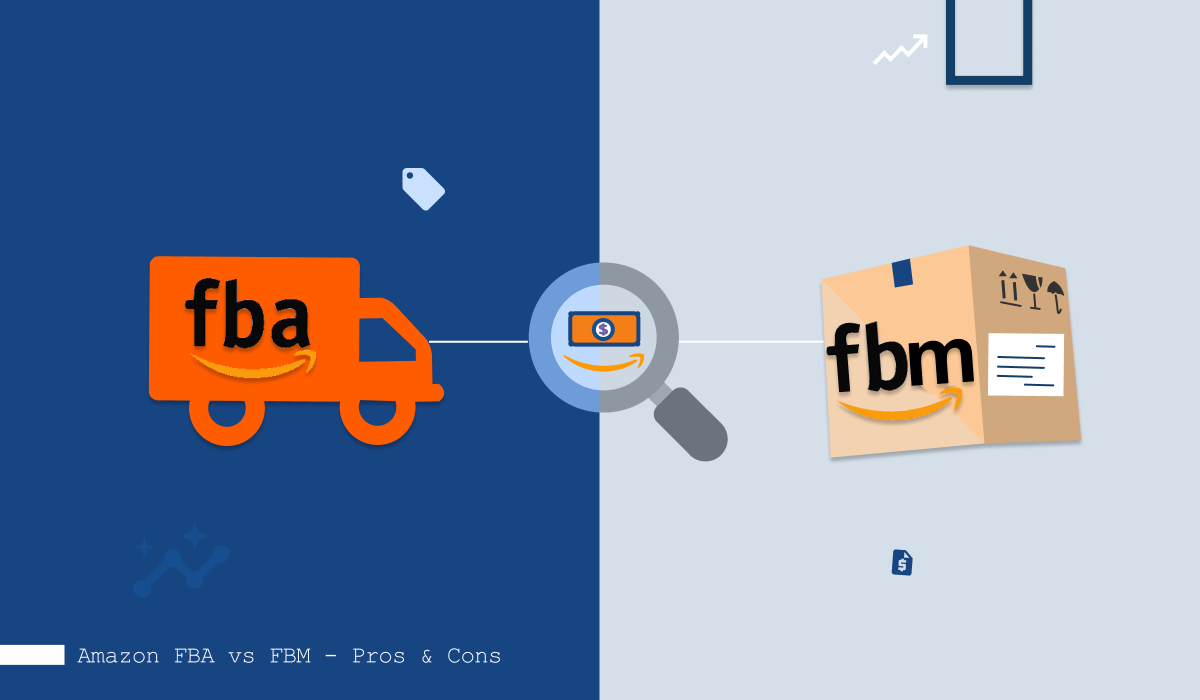When you decide to become a seller on Amazon, one of the first choices you’ll encounter is how you want to fulfill customer orders. Amazon FBA and FBM are the two main options available, each with its own set of advantages and considerations.
Understanding Amazon FBA
What is Amazon FBA?
Amazon FBA stands for “Fulfillment by Amazon.” It’s a service provided by Amazon that allows sellers to store their products in Amazon’s fulfillment centers. Amazon takes care of order processing, packaging, shipping, and even customer service for FBA orders.
How Does Amazon FBA Work?
As an FBA seller, you send your products to Amazon’s warehouses. When a customer places an order, Amazon handles the picking, packing, and shipping. They also offer customer support and manage returns, which can save you a lot of time and effort.
Pros of Amazon FBA
- Prime Eligibility: FBA products are often eligible for Amazon Prime, which can attract more customers due to the fast and free shipping benefits.
- Customer Trust: Products fulfilled by Amazon tend to be more trustworthy in the eyes of customers, leading to potentially higher sales.
- Time-Saving: With Amazon handling many operational aspects, you can focus on growing your business and sourcing products.
Cons of Amazon FBA
- Costs: FBA comes with fees for storage, fulfillment, and other services, which can eat into your profit margins.
- Less Control: You have limited control over shipping and packaging, which could lead to issues if not managed properly.
Exploring FBM (Fulfillment by Merchant)
What is FBM?
FBM, or “Fulfillment by Merchant,” means you, as the seller, are responsible for storing, packing, and shipping your products directly to customers without using Amazon’s fulfillment centers.
How Does FBM Work?
In the FBM model, you handle all aspects of order fulfillment. This gives you more control over the process, but it also means more work on your end, from storing inventory to arranging shipping.
Pros of FBM
- Cost Savings: FBM generally has lower fulfillment costs since you’re not paying Amazon’s storage and handling fees.
- More Control: You have full control over how products are packed and shipped, allowing for a more personalized touch.
- Flexibility: FBM can be a better option for businesses with unique or oversized products.
Cons of FBM
- Time-Consuming: Handling packing and shipping can be time-intensive, leaving you with less time to focus on other aspects of your business.
- Prime Limitations: FBM products aren’t eligible for Amazon Prime, which could put you at a disadvantage in terms of customer expectations.
Comparing Amazon FBA and FBM
When deciding between Amazon FBA and FBM, several factors come into play:
Cost Considerations
Amazon FBA involves additional fees, but it can offset those costs with increased sales due to Prime eligibility. FBM may have lower upfront costs, but it could lack the sales boost that Prime offers.
Shipping and Handling
FBA offers the convenience of Amazon’s robust shipping network, ensuring timely delivery and potential cost savings. FBM lets you control shipping, but it may result in longer delivery times if not managed efficiently.
Control Over Inventory
FBM gives you complete control over your inventory, reducing the risk of stockouts. With FBA, Amazon manages inventory, which might lead to issues if they misplace or lose your products.
Prime Eligibility and Customer Trust
FBA’s Prime eligibility can significantly impact buying decisions. Customers often prefer Prime products due to the fast and reliable shipping, which FBM can’t always match.
Factors to Consider When Choosing
Several factors should influence your decision:
Size and Nature of Your Business
Larger businesses with higher sales volumes might benefit from FBA’s efficiency. Smaller businesses with unique products could find FBM’s personalized touch more appealing.
Budget and Financial Resources
FBA requires upfront investment due to fees, which might not suit every budget. FBM’s lower costs could be a better fit for businesses with tighter finances.
Storage and Handling Capacity
Consider your capacity to store, pack, and ship products. FBM demands more hands-on work, so ensure you have the resources to manage it effectively.
Shipping Speed and Control
If quick shipping and Prime eligibility are crucial, FBA might be the way to go. If you want full control over shipping, FBM offers more flexibility.
Making the Decision
Assessing Your Priorities
Evaluate your business goals and priorities. If maximizing efficiency and leveraging Amazon’s infrastructure is key, FBA could be ideal. If you value control and cost savings, FBM might be the better choice.
Weighing the Pros and Cons
Carefully consider the pros and cons of each method based on your unique circumstances. A decision matrix could help you visualize the trade-offs.
Seeking Professional Advice
If you’re still unsure, consulting with e-commerce experts or sellers who have experience with both methods can provide valuable insights.
Conclusion
In the Amazon FBA vs. FBM debate, there’s no one-size-fits-all answer. The right choice depends on your business model, resources, and priorities. Amazon FBA offers convenience and access to Prime customers, but it comes at a cost. FBM provides more control and cost savings, but with increased responsibility. Whichever method you choose, remember that flexibility and adaptability are key to succeeding in the ever-changing e-commerce landscape.


 680
680